Research Areas |
| 1. Developing novel biosensors based on nanostructured materials |
Nanostructured materials such as nanoparticles, nanopores, carbon nanotubes, and nanowires are bringing unprecedented opportunities to biology. Their nanoscale dimensions allow them to interact intimately with and spy on the nanoscopic world of biomolecules and molecular machineries. We develop nanoelectronic biosensors based on graphene, carbon nanotubes and silicon nanowires which can detect biomolecules with exquiste sensitivity, and can interface with living cells for the detection of cellular activities, such as, biomolecular release and ion channel activities. |
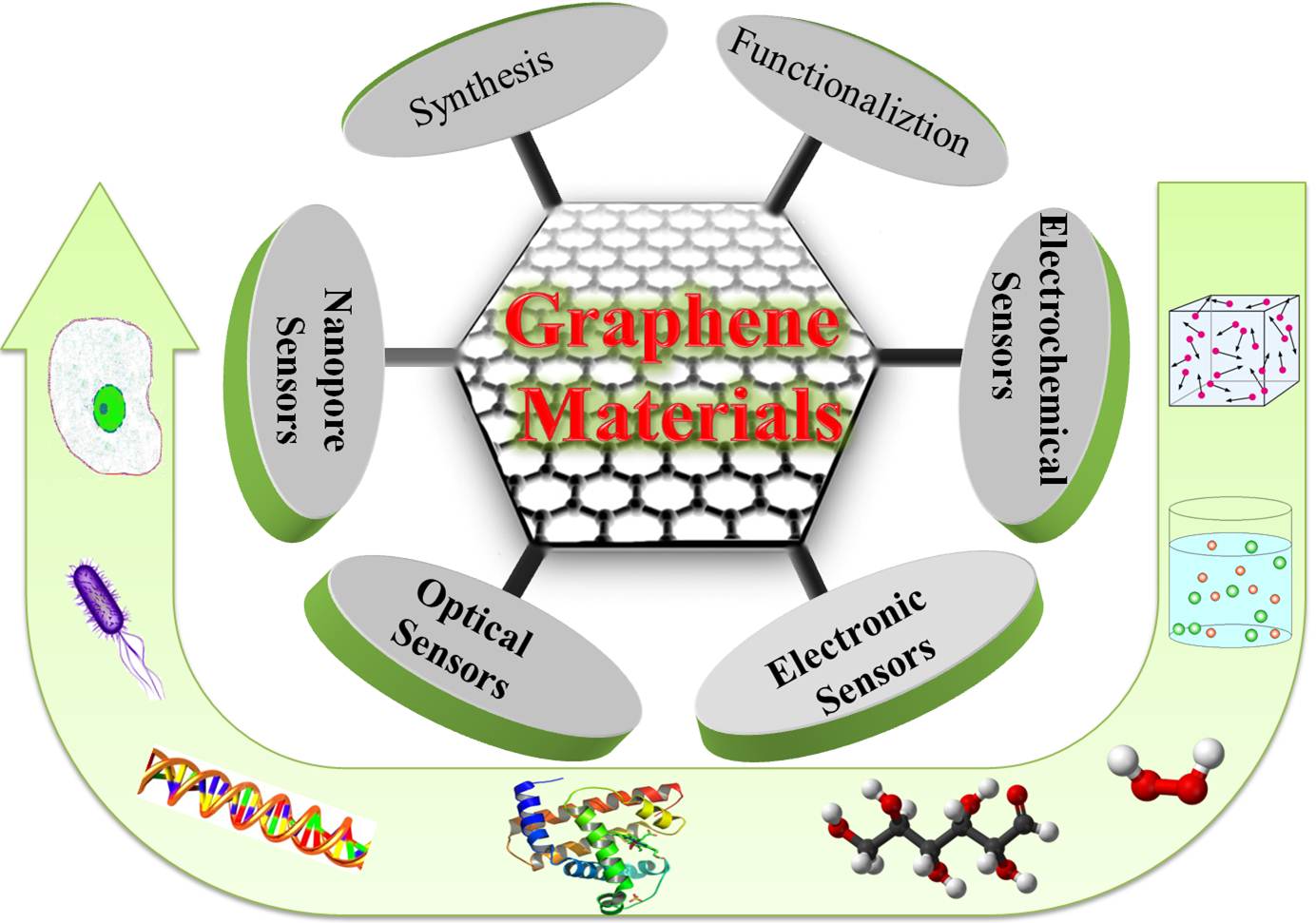
|
Graphene materials are used to develop novel sensors for the detection of biomolecules, pathogens, ions, and cell functions (Chemical Society Reviews, 41:2283-2307, 2012) |
Perfectly aligned arrays of long silicon nanowires fabricated using “top-down” CMOS compatible approach and their ability for real-time extracellular recording of cellular bioelectricity are presented. The technique enables non-invasive, highly sensitive, high throughput and long term electrophysiology measurements at single cell level or from tissue. (Small, 5(2):208-212, 2009) |
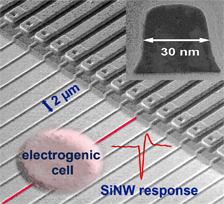 |
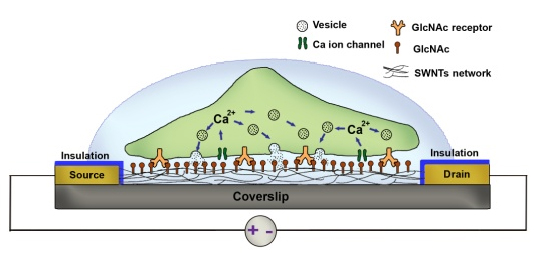 |
Glycosylated Nanoelectric biosensors: A strategy is devised to functionalize carbon nanotubes with bioactive monosaccharides. The glycosylated nanotube network can biocompatibly interface with living cells and electronically detect biomolecular release from them with high temporal resolution, highly sensitivity and simple detection scheme. (Angewandte Chemie International Edition, 48:2723-2726, 2009) |
Nanoelectronic biosensors based on readily fabricated networks of single-walled carbon nanotubes (SWNT-net) were used to non-invasively detect cellular bioelectrical signals. This nanotube approach promises applications in both fundamental research and high-throughput drug screening targeting on ion channels. (Advanced Materials, 22:3199-3203, 2010) |
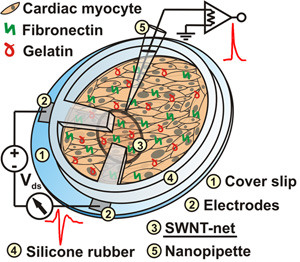 |
|
2. Studies on exocytosis (or regulated cell secretion) and adipobiology
|
We study the mechanisms of exocytosis, the fundamental process underlying hormone secretion from endocrine cells and neurotransmitter secretion from neurons, using integative methods including bio-imaging (confocal microscopy, total internal reflection fluorescence microscopy, Ca imaging), electrochemistry (micro-carbon-fiber amperometry), and biophysics (patch-clamp), and nanotechnologies (“Micro and Nanotechnologies for Study of Cell Secretion”, Analytical Chemistry, 83(12):4393-4406, 2011). More recently, we focus on investigating the regulated secretion of adipokines from adiocytes, and their involvements in metabolism and metabolic diseases (e.g., obesity and diabetes). |
 |
TIRFM is able to resolve individual vesicles in the subplasmalemmal region and track their random movement. |
Micro-carbon-fiber amperometry can electrochemically detect quantal release from single secretory vesicle (50-100 nm) and reveal the details of the fusion kinetics.
|
 |
 |
Apelin secretion and expression of apelin receptors in adipocytes are differentially reguatled by angiotensin type 1 and type 2 receptors (Molecular and Cellular Endocrinology, 351(2):296-305, 2012 )
|
|
3. Applying nanomaterilas for energy storage and conversion
|
We synthesize and functionalize nanomaterials (e.g., graphene, carbon nanotubes) and use them for energy applications, such as, supercapacitor, biofuel cells, and fuel cells. |
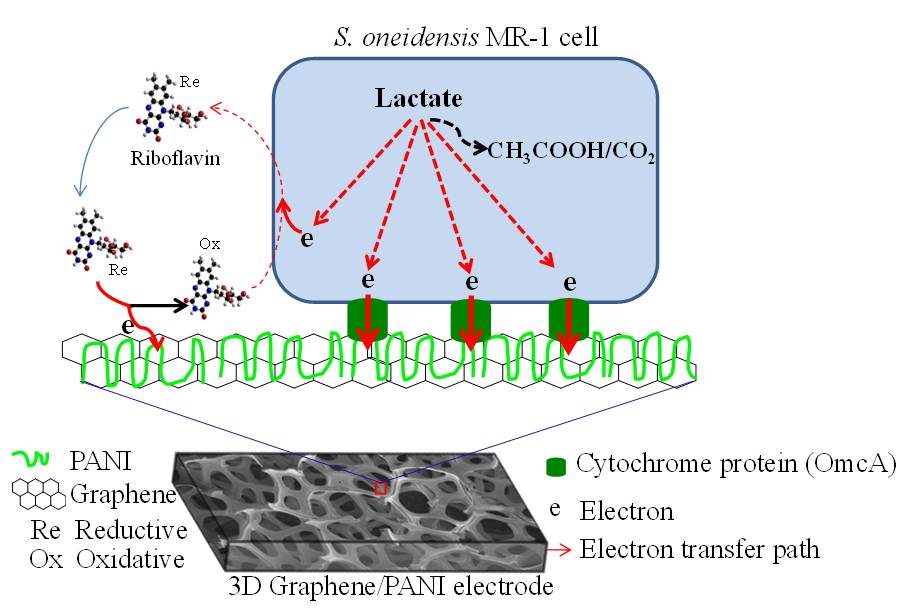 |
Polyaniline hybridized 3D graphene foam serves as a novel monolithic anode for high-performance microbial fuel cells. (ACS Nano, 6(3), 2394-2400, 2012)
|
|
A novel 3D graphene – Co3O4 hybrid was demonstrated and used for high-performance supercapacitor and enzymeless glucose detection (ACS Nano, 2012)
|
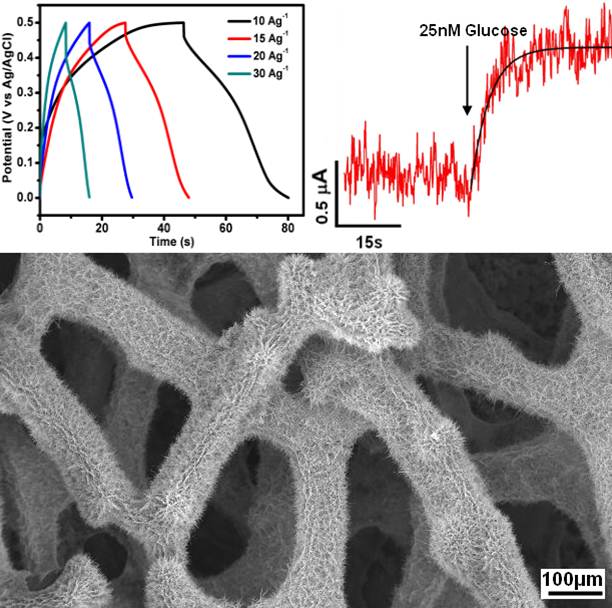 |
|
|



